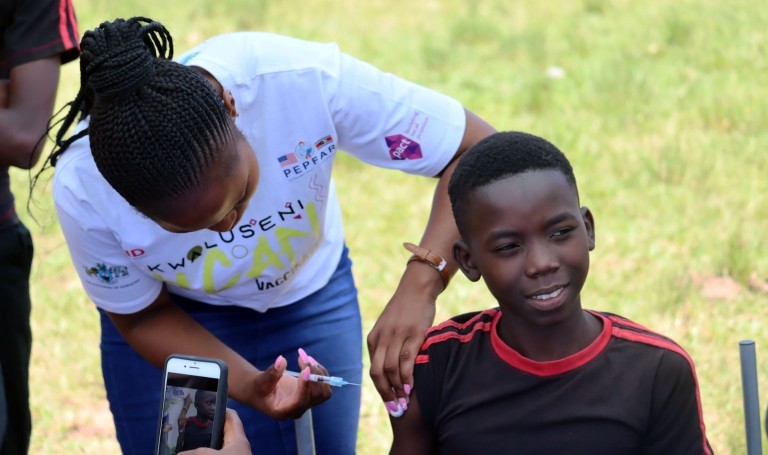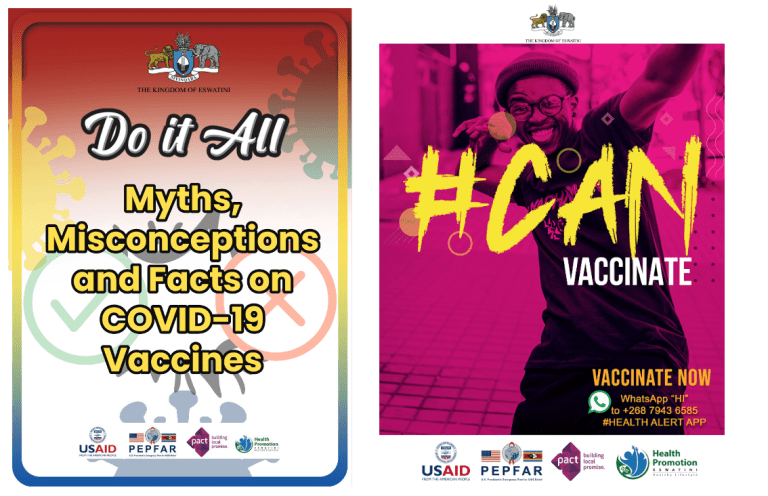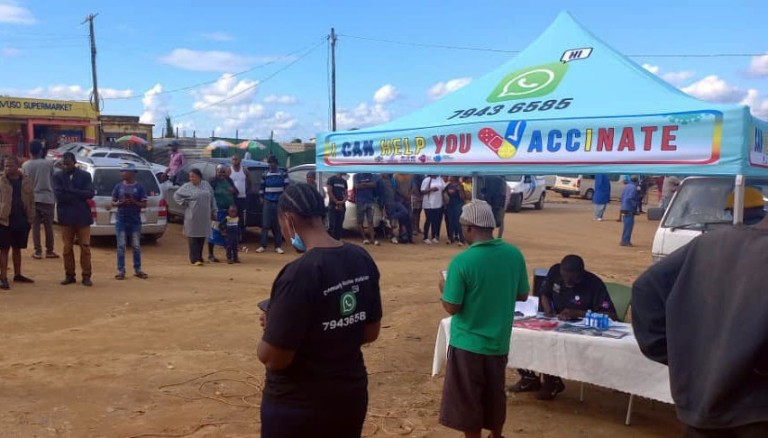Feature
Leveraging data, Pact fights Covid-19, boosts vaccination in Eswatini

When the Covid-19 pandemic began, sources of accurate information were scarce. That was the case in Eswatini, where Pact-supported community case workers were already working with thousands of vulnerable families to combat HIV through the USAID-funded Insika ya Kusasa project. When case workers visited homes, they heard many myths – that Covid was intentionally created, for example.
Because Pact was already well positioned in the community, USAID expanded Insika ya Kusasa to respond to Covid. Initially, Pact was charged with educating communities about how to prevent the spread of the virus. When a vaccine became available, Pact was tasked with supporting Eswatini’s Ministry of Health in the country’s efforts to get people vaccinated.
“We knew that misinformation would be a challenge,” explains Pact’s Chantelle Hulett, a technical lead in Eswatini. “Feedback from Pact’s community engagements indicated significant vaccine hesitancy. But beyond that, there was an information gap.”
In order to be effective, Pact and other stakeholders working to boost vaccinations needed to thoroughly understand barriers to uptake so they could address them.
With this in mind, in fall 2021, Pact undertook a critical assessment to understand how Eswatini communities perceive and understand Covid-19 and the Covid vaccine, including readiness for the vaccine, across four lenses: awareness, acceptance, accessibility and availability.

Pact conducted the assessment in 14 purposely selected Tinkhundla centers and 17 health facilities across the country’s four regions. Forty-two focus group discussions with more than 300 people were recorded, transcribed and translated to create an analytical dataset, then analyzed thematically. Questions covered how communities perceived Covid, what contributed to their attitudes and knowledge about the vaccine, and what communities needed to access the vaccine.
“Findings revealed valuable information about fears, myths and logistical hurdles,” says Daisy Kisyombe, a learning and evidence manager with Pact. “Everyone working on this was so eager to know what the study said and to make use of the data.”
Pact and our partners, including the Ministry of Health, used the information to create tailored communication strategies around the vaccine, including a mobile application used to reach a population well beyond those who Pact was already serving through Insika ya Kusasa. Pact and our partners created and revised education materials, trained and deployed community vaccine mobilizers and nurses, held school and faith-based mobilization events, and linked community members to clinical partners for vaccination.
“Because we had gathered quality data beforehand, we were able to successfully overcome specific misinformation that we knew was a barrier – myths that the vaccine is for animals, that it causes infertility and so on,” Hulett says. “The impact is that we’ve been able to effectively educate people, change minds and ensure vaccine uptake.”
Roughly 36% of Eswatini’s 1.2 million people have been vaccinated. More than a quarter were mobilized through Pact’s efforts.

As of this month, roughly 36% of Eswatini’s 1.2 million people have been vaccinated – about 417,000 people. More than a quarter were mobilized to get vaccinated through Pact’s efforts. After seeing Pact’s success, USAID has expanded the scope of our Covid-19 work from Insika ya Kusasa communities to the entire country.
“When we base our interventions on data, we are putting communities first,” Hulett says. “We are prioritizing their needs above all else by truly understanding them, rather than taking a top-down approach.”